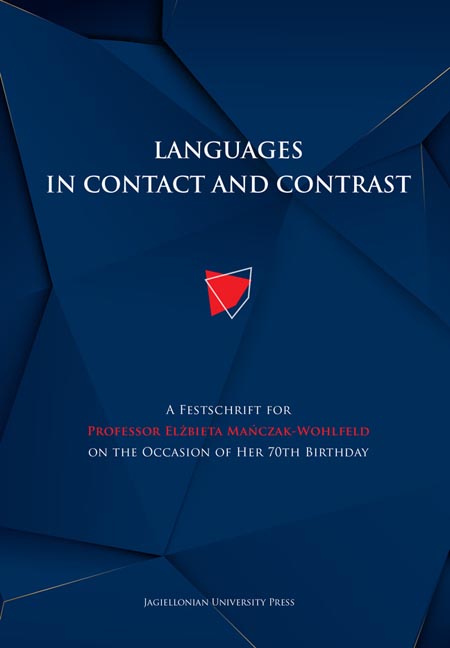 Languages in Contact and Contrast
Languages in Contact and Contrast Published online by Cambridge University Press: 14 October 2023
Introduction
The development of globalisation and the inclusion of Poland in the orbit of the European Union structures and activities have been quietly but steadily modifying the Polish public space, much as is the case with the other former socialist states that have shifted to capitalism, and indeed much as is the case with most of world states in the current era. The changes which result from, among other factors, the reform of the Polish schools programme concerning foreign language education in the 1990s, participation in the global market, opening of the borders and a major increase in tourism as well as economic migration and settlement have brought about considerable modifications in the Polish streetscape, particularly in big cities. This paper takes note of the latter aspect of the above developments, that is, the changes in the linguistic landscape of the Polish street, exemplified by the city of Kraków, a major tourist attraction on the map of Poland and Europe, which has been particularly open to all these tendencies that affect big urban centres worldwide. The processes discussed here are to be viewed as a depiction of everyday functioning of a major metropolitan area as well as a reflection of a power play taking place among various linguistic systems on the contemporary linguistic market. These, in turn, indicate the current political and economic position of the states whose official languages they are, and show how these languages coexist with Polish in the public domain.
Linguistic landscape
The theoretical framework for studying the presence and character of use of various languages in public spaces in their linguistic and semiotic manifestations goes back to the 1970s, and the first significant analysis, which, however, did not use the name of the field yet, was one developed by Rosenbaum et al. (1977), concerning the presence of English in Jerusalem. The concept of linguistic landscape was first properly introduced by Landry and Bourhis (1997: 23), who defined it as “the visibility and salience of languages on public and commercial signs”. Since then other definitions have appeared too, in an attempt to take into account the fast-changing reality of technological aspects of present-day communication (cf. Gorter 2013).
To save this book to your Kindle, first ensure [email protected] is added to your Approved Personal Document E-mail List under your Personal Document Settings on the Manage Your Content and Devices page of your Amazon account. Then enter the ‘name’ part of your Kindle email address below. Find out more about saving to your Kindle.
Note you can select to save to either the @free.kindle.com or @kindle.com variations. ‘@free.kindle.com’ emails are free but can only be saved to your device when it is connected to wi-fi. ‘@kindle.com’ emails can be delivered even when you are not connected to wi-fi, but note that service fees apply.
Find out more about the Kindle Personal Document Service.
To save content items to your account, please confirm that you agree to abide by our usage policies. If this is the first time you use this feature, you will be asked to authorise Cambridge Core to connect with your account. Find out more about saving content to Dropbox.
To save content items to your account, please confirm that you agree to abide by our usage policies. If this is the first time you use this feature, you will be asked to authorise Cambridge Core to connect with your account. Find out more about saving content to Google Drive.